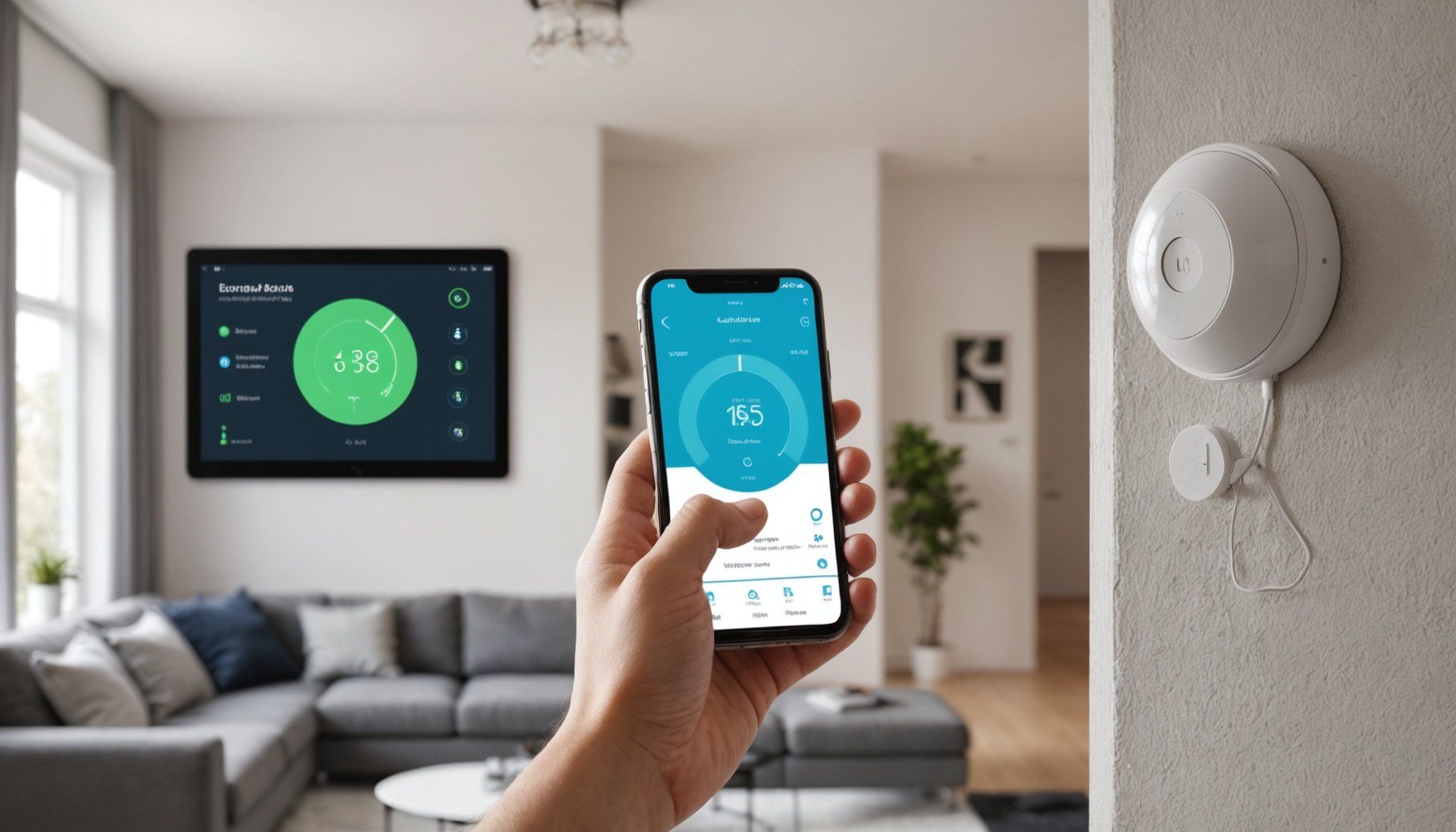Overview of Smart Home Leak Detection Sensors
Smart home leak detection sensors are essential devices designed to identify water leaks in real-time, preventing potential damage and costly repairs. These sensors are a critical component of a well-equipped smart home, as they provide an early warning system for leaks that might otherwise go unnoticed until they’ve caused significant damage.
In terms of cost-effectiveness, budget-friendly sensors are available, making them accessible for a wide range of homeowners in the UK. Despite their affordability, they offer a reliable solution for detecting leaks promptly. When considering a budget for installing UK leak sensors, it’s important to weigh their upfront costs against the potential savings from avoiding water damage and the resulting increase in homeowner expenses.
This might interest you : Revolutionary Cooking Gadgets That Streamline Meal Prep for Busy British Homes
Integrating leak sensors into a smart home system offers numerous benefits. Such integration allows homeowners to receive instant alerts on their smartphones, enabling them to take immediate action. Moreover, some smart home systems can be set up to automatically shut off the water supply when a leak is detected, reducing the risk of extensive damage. By addressing potential water issues quickly, these sensors ensure a safer, more efficient home environment.
Top Budget-Friendly Leak Detection Sensors
In the realm of affordable leak detection for the UK smart home, finding the best budget leak sensors is crucial to preventing costly water damage.
Topic to read : Creating an Eco-Friendly Solar Lighting System: A Guide for UK Homeowners to Enhance Security and Beauty Outdoors
Product 1: Sensor A
Sensor A stands out with its wireless connection and user-friendly app interface, making it a top contender for smart home integration. Priced at £30, it offers real-time alerts and a long battery life of up to 2 years. Pros include its compact design and easy installation. However, the lack of a temperature sensor is a con.
Product 2: Sensor B
Sensor B excels in affordability, £25, while maintaining essential features like sensor cable extensions for hard-to-reach areas. Its discrete profile fits seamlessly into UK homes. Pros are its expandability and budget price, but the con is its limited alert system, relying solely on audible alarms.
Product 3: Sensor C
Sensor C integrates effortlessly with other smart home devices, priced at £35. It offers Wi-Fi connectivity and an intuitive mobile app that sends instant leakage alerts. Its pros include its comprehensive smart home compatibility and robust alert systems. A con is the higher price compared to Sensors A and B.
Features to Consider in Leak Detection Sensors
When selecting a leak detection sensor, there are essential features to prioritise. First, consider the sensor’s smart home compatibility. Ensuring the sensor integrates smoothly with your existing smart home system streamlines monitoring and allows for quicker responses to potential leaks. This compatibility is crucial for users who rely on smart home ecosystems for various aspects of home management, enhancing overall efficiency.
Additionally, focusing on features tailored to UK climates is beneficial. The UK is known for its rainy weather and fluctuating temperatures, which can pose unique challenges to home infrastructure. Look for leak sensors with robust moisture detection technologies capable of operating under varying environmental conditions. This adaptability ensures the sensor remains reliable throughout different seasons.
Moreover, consider sensors that offer real-time alerts and easy installation processes. Ease of use is vital for effectively utilising the sensor’s capabilities and preventing potential water damage. Some sensors may even offer integration with mobile apps, allowing for remote monitoring and swift notifications, ensuring homeowners can promptly address leaks even when away from home. Prioritising these leak sensor features will provide peace of mind and optimal protection.
Installation Guidelines for Leak Sensors
Installing leak detection sensors in UK homes involves several straightforward steps. Begin by selecting the ideal location, such as under sinks or near appliances prone to leaks. DIY installation is simple: place the sensor on a flat surface, ensuring it’s level and unobstructed.
Connection to a home network can be done via Wi-Fi, allowing for real-time alerts. UK home set-up often involves ensuring the device is compatible with local internet standards and power outlets.
Common Pitfalls and Troubleshooting
Avoid mistakes such as incorrect sensor placement, which can lead to delayed leak detection. Ensure the sensor’s battery is charged, as low power can hinder performance. If connectivity issues arise, verify Wi-Fi settings and device compatibility.
Recommended Maintenance Practices
Regular checks are vital for longevity. Clean sensors to prevent grime build-up, which can affect sensitivity. Check battery levels periodically and replace as necessary. Keeping your leak sensors in optimal condition helps ensure they function effectively, providing peace of mind by safeguarding against potential water damage.
User Testimonials and Reviews
Exploring the world of leak sensors becomes insightful when we dive into user experiences and product ratings. Customers frequently praise the precision and reliability of these devices. Positive user feedback often emphasises the peace of mind provided by effective leak detection, especially in preventing significant water damage.
One notable benefit recounted through leak sensor reviews is their utility in averting basement flooding. Users have shared experiences where prompt alerts from these sensors saved valuable possessions and structural elements from water-related destruction. It is not uncommon to read about how the integration of these devices with smart home systems enhances their utility, offering real-time notifications that enable rapid response to potential leaks.
However, not all user feedback is glowing. Some users mention difficulties with connectivity and false alarms. These issues can sometimes lead to temporary frustrations. Yet, many agree that improvements in technology continue to address these concerns.
Essentially, these testimonials highlight both the benefits and challenges of incorporating leak sensors into homes. The overarching consensus points to a valuable investment in home protection, especially for those aiming to preempt water damage scenarios.
Comparison Chart of Top Leak Sensors
In selecting the right leak sensor, observing a Sensors Comparison Chart proves invaluable. Key features and price points are visually compared, enabling quick references for users weighing options.
-
Feature Comparison: Look for vital elements such as detection range, connectivity options, and power sources. High-performing sensors typically integrate with smart home systems, enhancing automated responses to leaks. In particular, some sensors excel through battery longevity and ease of installation.
-
Price Points: While budget sensors might offer basic leak detection, investing in premium products often yields advanced functionalities. Premium models cater to extensive properties or those requiring smart home integration, justifying their higher costs.
-
UK-Specific Features: Ensure the leak sensor caters to UK specificities like metric measurements and compatibility with regional connectivity standards. Some models might also include localisation, which augments the installation guide and user interface.
A comprehensive chart facilitates effective decision-making by summarising how features align with individual needs. Prioritise features comparison according to your living space and technological preferences, enabling an informed purchase.
Additional Tips for Maintenance and Troubleshooting
Proper upkeep of your leak sensor is crucial to ensure its longevity and effectiveness. Regular maintenance keeps the sensor in top shape, preventing potential malfunctions. Start by cleaning the sensors with a soft, damp cloth to remove debris that may interfere with their function. Inspect the battery status frequently; replace it as soon as it shows signs of depletion to avoid unexpected failures.
Troubleshooting Tips
When your sensor seems faulty, perform these troubleshooting tips:
- Check for obstructions: Ensure nothing physical blocks the sensor or its signal.
- Verify the power source: Confirm that batteries or direct power supplies are active and functional.
- Sensor placement: Alter the sensor’s position slightly; poor positioning can lead to inaccurate alerts.
If these steps do not resolve the problem, consulting the device’s manual or contacting customer support may be necessary.
Additionally, for optimal performance, replacing sensors periodically is advisable. This helps maximize reliability, especially if they start to show erratic behaviour or have been operable for several years. This ensures that your device operates at its best, providing accurate alerts and peace of mind.











